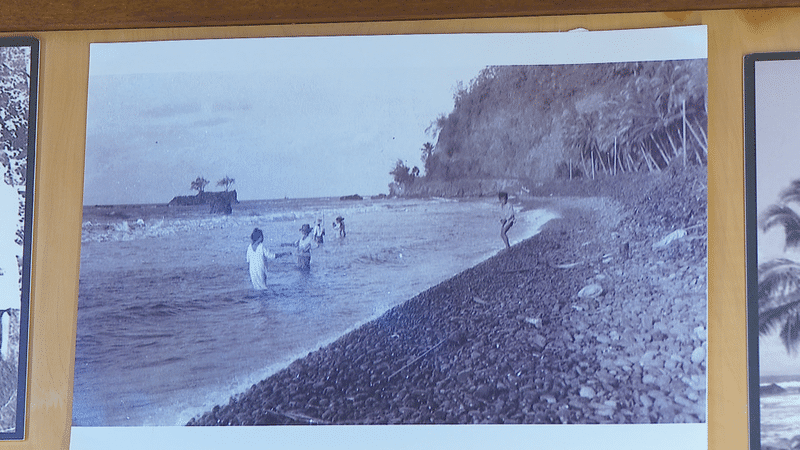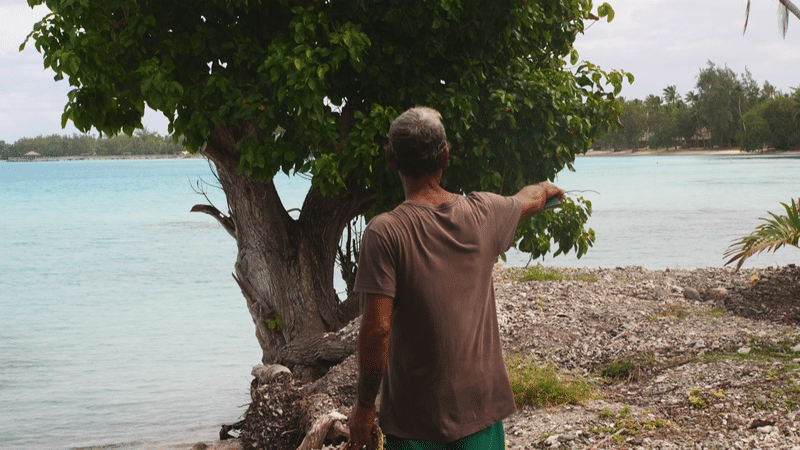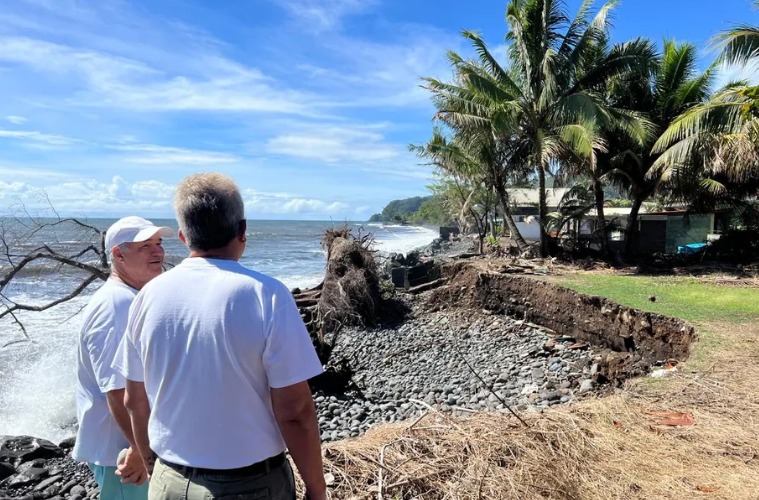CEREMA, Center for studies and expertise on risks, the environment, mobility and planning, confirms this in a study published on April 5. The projections on the retreat of the coastline are alarming. By 2050, hundreds of residents will have to leave their homes.
A piece of land torn away by the sea. In the north of Grande Tahiti, around twenty homes suffer from coastal erosion. This is particularly the case on either side of the mouth of the Papenoo, over a kilometer long. The Nat depression in February took away 15 meters of the family land of Teva Pani, a local resident: “It hurts because originally, my wife’s grandparents did not leave the place to us in this state. Some trees, including a coconut tree, were swept away. With the family we try to organize ourselves to rip rock by ourselves, because if we have to wait… (Editor’s note: the public authorities)”

On either side of the mouth of the Papenoo, over a kilometer long, the Nat depression in February took away 15 meters of the Teva family land • ©Cybèle Plichart
The last rainy season was devastating
A little further on, the rock of the Mamu school held up, but not the enclosure wall. The pebbles mingled with the waves. On this portion of the public domain, the municipality and the country will be able to intervene.
But not on private properties, like that of Christophe Thuillier, where the land is as if gutted. “With each passing depression, the phenomenon becomes more pronounced. So without a protective barrier… The cyclone season from December to June is always likely to bring a lot of damage.”

In the north of Grande Tahiti, around twenty homes suffer from coastal erosion. • ©Cybèle Plichart
Not all municipalities have the means to re-fill the banks
According to the first deputy of the town hall of Hitiaa O Te Ra, Teuira Letourneux, “we cannot leave the population to their own devices. Our services will wait for the sea to drop a little to be able to bring in a dredger. Even if we cannot buy rocks to riprap, we can recover what has fallen and create a basic protection.”

40 years ago, residents and swimmers could still enjoy a seaside preserved by erosion. • ©P.1ère
Tuamotu: 6 meters of land lost in 25 years
The low islands of the Tuamotu are not spared. In Rangiroa, even on the lagoon side, residents helplessly watch the rising waters. “We have lived here for 25 years, we have lost around 6 meters of land,” notes Alexander Matarere, a resident of Ohotu, helplessly. “When there are strong swells, at high tide, it even invades the path that leads to the quay. We wonder what land inheritance we are going to leave to our children.”

Rangiroa is one of the low islands where the most exposed residents have seen the sea gain up to 6 meters inside their property. • ©Matua Hauata
It’s not so long ago that we could still run on the beaches of Papenoo. But no room for nostalgia. In the Antilles, Reunion Island and Mayotte, a study shows that by 2050, the retreat of the coastline could make hundreds of homes uninhabitable. The phenomenon is also accelerating in French Polynesia.


